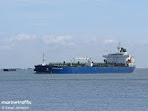There's been no confirmation by the new leadership of the
move, but it seems likely to raise concern inside and outside Syria over the
role such foreign militants may play in the country's future.
It
comes amid reports that Syria's new de-facto leader, Ahmed al-Sharaa, has held
separate meetings with representatives of the Kurds and Christians in the
country – two communities that are most concerned about the potential agenda of
the new authorities.
Several Syrian sources have deduced that out of almost 50
new military roles that have been announced, at least six have gone to
foreigners.
Based on the names that have been published, they are said
to include Chinese Uyghurs, a Jordanian and a Turkish national. All are said to
have been given high-ranking positions as colonels or brigadier generals.
The role of foreign fighters in various armed groups during
the civil war is one that stirs strong feelings in Syria.
Thousands of fighters from many different countries joined
the uprising against Assad as it became an all-out armed conflict when mass
protests were met with violence by the security forces.
Militants
from abroad were seen as trying to impose their extremist ideology on Syria —
something that Syrians from all communities are now saying they will not accept
in the country's future after Assad.
Some formed their own groups and others provided the core of
the Islamic State (IS) group, which took control of large regions in the east
of Syria.
Opponents of HTS had long accused it of being largely made
up of foreign militants — a charge Assad supporters used to try to delegitimize
the group as it mounted its final, decisive offensive against the regime.
But in the years that he ran the rebel enclave in Idlib,
Ahmed al-Sharaa – the leader of HTS and now Syria – had been getting rid of
some of those foreign fighters in a bid to bolster his group's credentials as a
nationalist rather than overtly jihadist force.
Since taking power al-Sharaa has repeatedly stressed the
vision of a unified Syrian state, in which all communities must be respected
and have a stake.
On Tuesday, a Syrian official said the first talks between
members of the Kurdish-led Syrian Democratic Forces (SDF) and al-Sharaa since
he became the most powerful man in Syria three weeks ago have now taken place
and were positive.
The SDF
is backed by the US and controls much of the north-east of Syria. But Turkey,
which has backed al-Sharaa's group HTS, sees them as terrorists, which has
raised fears of a looming confrontation.
Al-Sharaa has also met high-level members of the Christian clergy.
He has stressed that he wants all communities to have a stake in Syria's future
and is preparing a National Dialogue Conference to try to ensure that this
process can begin.
For those who are concerned that his actions might not match
his words, this apparent move to formalize the positions of some prominent
foreign fighters may give them further pause for thought.
The appointments appear to have been made in order to reward
those fighters – whether from Syria or elsewhere – who played a significant
role in the final triumph over the regime.
For the same reason, some of the remaining foreign fighters
– along with their families – now seem likely to be given Syrian citizenship.
The issue is just one of many that could complicate any
successful transition to a new political and social framework in Syria.
The new authorities are putting a lot of weight on a
National Dialogue Conference that is being prepared to bring together
representatives from all sections of society – although no date has been set.
The hope is that the conference will set in motion the
process to rebuild the institutions of the broken and divided country.





















